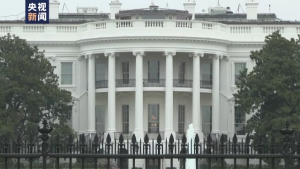The US 2022 midterm elections were held on 8 November and the results as of 14 November show that the Democrats have picked up 50 seats in the Senate and do not have to wait for a run-off in Georgia to hold on to their slim Senate advantage. The House of Representatives has yet to determine the final results due to vote counting, and the situation is still tied, with the Republicans temporarily in the lead and more likely to regain control of the House.

The “red wave” expected by Republicans in this election did not occur, and the ruling Democratic Party performed beyond expectations. Historically, voters who vote for the president in presidential elections tend to vote for the opposition party in midterm elections due to the psychological compensation effect and the tendency to check and balance power, making it probable that the ruling party will lose seats in the midterm elections. This “pendulum effect” makes mid-term elections a nightmare for the president’s party. The election largely continued this trend, with the Republican Party winning more votes than in the last election, increasing its support in traditional “swing states” such as Florida and winning in some “deep blue” districts. However, the Republicans did not perform as well as they had hoped, and even if they had taken the House, they would have maintained only a narrow advantage; in what was expected to be a close Senate race, the Republicans lost key seats in Pennsylvania, allowing the Democrats to remain in control. In the gubernatorial and local level races, Republican landslides did not occur either. Republican bigwigs such as Senator McConnell have openly admitted that the Republicans did poorly.
These election results portend a dynamic of intense partisanship that will continue to dominate the course of US domestic politics. On the one hand, in a highly polarised political context, a Republican control of the House of Representatives would pose a major constraint on the Biden administration. It can be expected that the Republicans will likely launch a counter-attack against the Democrats on major domestic issues of public concern, such as immigration, abortion and tackling inflation, and Biden will be significantly constrained from introducing major legislation in the social and economic fields. The likelihood of Republicans impeaching President Biden would also increase significantly. Republicans such as McCarthy, who is likely to become the new Speaker of the House, have repeatedly said publicly that they will launch a series of investigations into Biden and even initiate impeachment. Trump, who is trying to make a comeback, is bound to fan the flames. With these issues still largely in balance, further heated confrontations and political stalemates between the two parties are inevitable. On the other hand, as we head into the 2024 election cycle, the party dynamics will continue to intensify. Florida Governor DeSantis, who won big in this midterm election, is already seen as a strong contender for the Republican Party’s 2024 presidential nominee. Such a figure with greater political ambitions will inevitably launch a new political offensive against his opponent’s party to showcase his political views and exposure, while garnering support within his party.
At the foreign policy level, the midterm elections will not trigger a fundamental shift in US foreign strategy, but they will still have a number of subtle implications. As the Biden administration’s National Security Strategy shows, the overall tone of the US foreign strategy of both parties is becoming increasingly convergent, with the Democratic administration’s judgement of the international environment, security threats and the use of policy tools not fundamentally different from the Trump administration’s 2017 National Security Strategy. There is also a high degree of commonality in the two parties’ pursuit of maintaining US hegemony. It should be noted that the increase in the number of Republican seats in Congress may reinforce the “hawkish” tone of US foreign strategy. On issues such as the Iranian nuclear negotiations and the North Korean nuclear issue, the relatively more assertive side of the Republican Party may exert pressure on the Biden administration’s established strategy. At the same time, the Republican Party’s “non-interventionist” approach could constrain the Biden administration’s aggressive diplomatic agenda. The most prominent issue at the moment is US military aid to Ukraine. Many Republican lawmakers have argued that the US should not support Ukraine indefinitely, arguing that the Biden administration’s aid policy not only places a greater financial burden on the US but also puts the country at risk of being embroiled in new and endless external strife. With Democratic progressive lawmakers holding the same view, the Biden administration’s aid to Ukraine may face greater variability. This, coupled with the potential danger of an escalation of the Ukraine crisis, could lead to a transmutation of the overall US policy towards the Ukraine crisis.
In terms of China policy, the mid-term elections have once again reinforced the climate of hostility towards China in the US, while the rise in Republican strength could accelerate the legislative process for major China-related bills. It is no longer unique to the midterm elections that both parties are trying to gain attention in the election by hyping China-related issues. During the election process, many candidates have included the so-called “China threat” in their platforms, and both parties have speculated about the other party’s so-called “China connection” issues. In response to major China-related legislation such as the so-called “Taiwan Policy Act”, the Republican Party was already unhappy with the speed of the Democratic Party’s legislative push and opposed some of the Biden administration’s attempts to downplay the bill’s stimulus to China. In recent years, congressional influence on US policy towards China has continued to rise, and this trend will be further reinforced in the new Congress, with the potential for competing bipartisan displays of assertiveness being further accentuated. At the same time, once the government and Congress are under the control of the two parties, there may also be a lack of synchronisation and dissonance between the administration and Congress in the promotion and implementation of China policies, thus increasing the complexity of US-China relations.

